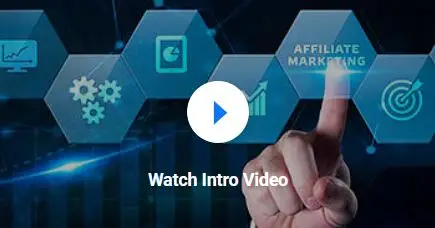I have always found value in sharing my expertise and guiding others toward financial freedom. Creating an online course is a practical way to generate passive income.
In this guide, I'll explain how to build a successful online course from the ground up. My experience in online education has taught me that solid planning combined with quality content can help you earn money continuously.
Online courses let you share your wisdom and help others while earning income long after you finish recording. My goal with this article is to break down the process while addressing challenges and strategies that can make your course both interesting and sustainable.
Table of Contents
Affiliate Disclaimer: This site contains affiliate links, which means I may earn a commission on purchases made through these links at no extra cost to you.
Strategies for Creating an Online Course

Creating an online course begins with detailed planning. I started by identifying my area of expertise (aka Niche) and researching the target audience. It is important to focus on topics where you hold genuine knowledge and experience.
Laying out a course outline helps organize the material into logical sections and makes it easier for students to follow. Breaking a subject into easily digestible segments provides both structure and clarity. This stage sets the foundation for what will follow and helps with planning the time and effort needed to create the course.
Another important aspect of the process is selecting the right delivery method and tools. For instance, you might choose to record video lessons or offer interactive quizzes. Whatever you choose, your content should always be straightforward to follow.
Tools like screen recording software and video editing programs make it possible to create high-quality lessons. Understanding your audience and their learning preferences will help guide your choices. I have learned that a mix of visual and audio elements tends to keep learners interested and focused throughout the course.
Step-by-Step Process to Launch Your Online Course
Once I had a solid focus, I organized the course into modules and lessons. This made it simpler to plan the scope and gradually develop the course over several weeks.
The next step was content creation. I set aside time to record videos, prepare presentation slides, and write supplementary materials. Throughout this process, I made sure that the content was engaging and structured around key takeaways for the students.
Testing the material with a small group helped me spot areas that needed further clarity. Once the content was ready, I set up an account on a trusted course platform and uploaded my work.
The next stage involved deciding on pricing, drafting a promotional plan, and confirming a launch date. Tracking progress and gathering early feedback improved the overall quality of the course.
A few essential steps in the process include:
- Choose Your Topic: Begin with a subject where you have expertise and that meets a market need.
- Outline Your Modules: Break down the content into clear modules and lessons for better organization.
- Create Engaging Content: Mix videos, slides, and written material to keep the course dynamic.
- Select a Course Platform: Pick a platform that offers smooth hosting, reliable payment options, and efficient student interaction.
- Market Your Course: Develop a marketing strategy to reach the right audience.
Overcoming Common Challenges

Every course creator faces obstacles when launching an online course. I encountered challenges such as balancing content quality with production costs. A common hurdle is making sure that the course material stays current. Technology evolves, and students expect up-to-date information. It is important to schedule regular revisions and actively ask for feedback from students.
Technical issues like video editing difficulties or audio quality problems can be discouraging early on, so investing time to learn basic production skills can help ease the process.
I also realized the importance of having a strong marketing plan. Without a proper outreach strategy, even a well-crafted course might struggle to attract students.
Building trust with your students is another important factor. Most people look for credibility and a promise of valuable content. Including detailed outlines and offering sample lessons can alleviate any uncertainties potential students might have.
Additionally, understanding legal requirements and the policies of your chosen course platform is essential.
Finally, it’s important to acknowledge that passive income might take time to build. Persistence, continuous improvement, and upholding high standards are key to overcoming early challenges.
👇 Ready to Build Your Online Business from the Ground Up?
Before you launch your course, make sure you have a strong foundation in affiliate marketing.
Discover if Wealthy Affiliate is the right platform for you →
Advanced Tips and Tricks to Maximize Passive Income
After your online course is launched, there are advanced tactics to make sure it remains a steady source of income. I experimented with various marketing approaches that helped boost enrollment.
- For instance, using email campaigns to reach former students and potential leads proved extremely effective.
- Refining my website to clearly highlight course benefits and showcasing testimonials added credibility and encouraged sign-ups.
- Since online marketing is always changing, I made sure to keep up with current trends by reading industry blogs and networking with other educators.
- Use discount codes and limited-time promotions to attract new enrollments.
- Integrate live Q&A sessions with recorded lessons to add a more personal touch to the experience.
- Other advanced strategies include tapping into affiliate programs where other educators and bloggers help promote your course.
By exploring multiple channels and continuously fine-tuning your approach based on student feedback and market changes, your course can steadily generate returns over time.
Platforms and Tools for Course Delivery

Selecting the right platforms and tools can make all the difference when it comes to successfully delivering a professional learning experience. Several platforms cater to different educational needs. I reviewed options that offered simple interfaces, integrated payment solutions, and useful analytics.
Some platforms specialize in creative and educational content, while others are more general. Knowing the differences helped me choose a platform that best met my objectives. It is also important to consider hosting options and how content updates are handled.
Good quality production tools also play a key role in course delivery. Investing in reliable video recording and editing software helps make sure your lessons are both clear and appealing. I made use of dependable microphones and editing tools to remove background noise and polish my recordings.
Interactive features like quizzes and discussion forums go a long way toward keeping students involved. After testing a variety of software options, I selected the ones that allowed me to deliver my course content effectively while also offering flexibility for scaling up in the future.
Course Platforms
These all-in-one platforms handle everything from hosting to student enrollment and payment processing:
Teachable – A user-friendly platform that lets you build, brand, and sell your online course with integrated payments and marketing features.
Thinkific – Great for creators who want more design flexibility and advanced learning tools without monthly fees upfront.
Podia – Offers a clean, intuitive interface and bundles courses, digital downloads, and memberships together in one space.
Video Tools
Professional video content sets your course apart. These tools help you create lessons that look and sound great:
PowerDirector 365 (by CyberLink) – A powerful and affordable video editing suite that’s perfect for course creators. It includes templates, motion graphics, and voiceover tools.
Camtasia – Ideal for recording your screen and editing tutorials with annotations and callouts. Great for tech or software-related courses.
CapCut – A simple yet feature-rich editor, perfect for creators on a budget. Use it to polish course intros or repurpose clips for social media promos.
Engagement Features
Keep students involved and motivated with these interactive tools:
Interact – Create quizzes, assessments, or personality tests that integrate with your course or lead magnet strategy.
Disqus – Add discussion threads to your course modules to encourage community learning and feedback.
Kajabi Community – If you’re using Kajabi, this built-in feature gives your students a private space to connect and engage.
Frequently Asked Questions
Question: What is the most important step in creating an online course?
Answer: Planning and outlining the course content is very important. A clear plan helps ensure every aspect of the subject is covered and creates a smooth learning experience for your students.
Question: How long does it take to create a quality online course?
Answer: It varies based on the complexity of the course and the depth of research needed. I recommend setting realistic deadlines and breaking the work into manageable tasks, which can take from a few weeks to several months.
Question: Can I update my course after launch?
Answer: Yes, regularly updating your course is very important. Refreshing your material ensures that the content remains relevant, sustains student interest, and keeps your course competitive in a rapidly changing market.
Wrapping Up
Creating an online course as a means to earn passive income requires careful planning, quality content, and a readiness to adapt. I believe that by following a clear structure, you can build a course that provides genuine value to students while continuing to bring in income over time. The process involves selecting your niche, outlining concise modules, and using the right tools to deliver professional content. Overcoming challenges is part of the process, and building on feedback and strategic improvements is key to long-term success.

THIS IS HOW I MAKE MONEY ONLINE!
- Build your own website based on your passions and interests
- Generate consistent monthly income
- Grow and monetize your social media platforms
- Work from anywhere and create passive income streams

Elizabeth teaches people how to make money online through affiliate marketing. Her tips and strategies help readers earn a Full-Time Income from home. She shares easy steps for success on her blog. Follow her to start your journey!







